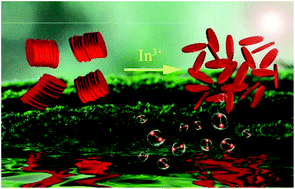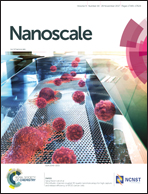Foreign In3+ treatment improving the photoelectrochemical performance of a hematite nanosheet array for water splitting†
Abstract
In this work, we found that foreign metallic ion (In3+) treatment enhanced the photoelectrochemical (PEC) activity of hematite nanosheets aligning on a substrate without joining the host lattice. Scanning electron microscopy (SEM) observation indicated that the In3+ ion treatment nearly did not change the size and thickness of the hematite nanosheets during solvothermal synthesis. However, the treatment reduced nanosheet stacking and increased the active surface area of the hematite photoanode. Careful combined analyses involving Energy Dispersive X-ray (EDX) spectroscopy, X-ray photoelectron spectroscopy (XPS) and powder X-ray diffraction (XRD) confirmed that In3+ ions were not doped in the hematite nanosheets. Interestingly, after the In3+ treatment, the photoelectrochemical properties of the hematite nanosheets were highly enhanced when they were used as a photoanode for water splitting. The photocurrent density at 1.23 V (versus reversible hydrogen electrode) was 2.6 times as high as that of the hematite without In3+-treatment. The improved PEC activity was deduced to be associated with the increased active surface area for higher light absorption and more photoelectrode/electrolyte junctions, as well as higher carrier density after the In3+-treatment. Furthermore, the efficiencies of the surface charge separation and charge transfer for the In3+-treated hematite nanosheets also increased much more.



 Please wait while we load your content...
Please wait while we load your content...